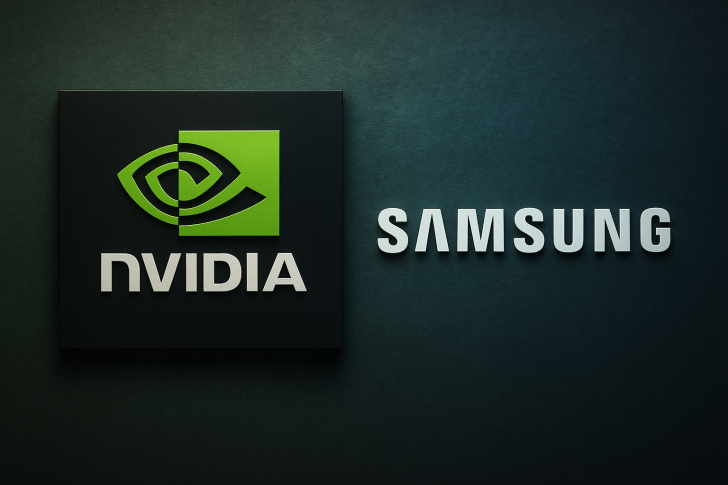Nvidia (NVDA) shares stayed relatively stable this week despite exciting news about its growing partnership with Samsung Electronics. The two tech giants are working on something ambitious: an AI Megafactory powered by 50,000 GPUs. This isn't just another data center project—it's about bringing AI directly into manufacturing, which could completely reshape how factories operate worldwide.
A Deepening Partnership Between Two Tech Giants
According to trader Shay Boloor's recent update, Nvidia CEO Jensen Huang revealed that Samsung manufactures all of Nvidia's robot processors, highlighting just how interconnected these companies have become.
Samsung plans to use Nvidia's Blackwell and Jetson Thor processors to power advanced factory robotics across their chip, smartphone, and appliance production lines. These systems will make real-time decisions and optimize themselves without human intervention.
What makes this different from traditional automation is the integration. The AI Megafactory concept brings together robotic control, digital twin simulation, and AI training into one unified system. Every process—from testing microchips to mechanical assembly—can be modeled, analyzed, and improved automatically.
What the Stock Chart Shows
Nvidia's stock has been moving sideways lately, consolidating between $430 and $470 after strong gains earlier this year. The chart shows a clear accumulation zone:
- Support level: $430
- Resistance: $470–$480
- Potential breakout target: $495–$500
Trading volume has been moderate, and the price range is tightening, which usually means investors are waiting to see what happens next. If the stock closes above $470, we'll likely see renewed buying momentum. If it drops below $430, expect some short-term profit-taking as tech investors rotate into other sectors.
Why This Changes Nvidia's Story
For years, Nvidia's GPUs were mainly used in data centers, gaming, and cloud AI. Now the company is moving into industrial infrastructure in a big way. Its technology is controlling robots, optimizing production lines, and running fully simulated digital twins. This merges hardware with industrial intelligence in ways we haven't seen before.
For Samsung, integrating Nvidia's processors means faster development cycles and more energy-efficient automation. It also helps both companies build sovereign AI manufacturing capabilities, reducing their dependence on external infrastructure.
The Bigger Picture
This partnership comes at a time when competition in AI semiconductors is heating up. AMD, Intel, and Google are all trying to expand their AI ecosystems. But Nvidia keeps its edge through superior GPU performance and a comprehensive software stack. The company is positioning itself as the foundation of the AI industrial economy.
While investors want to see new revenue streams beyond data centers, this Samsung project proves Nvidia's long-term vision. The company is embedding AI into every layer of production, from chips to robots.
 Eseandre Mordi
Eseandre Mordi

 Eseandre Mordi
Eseandre Mordi


